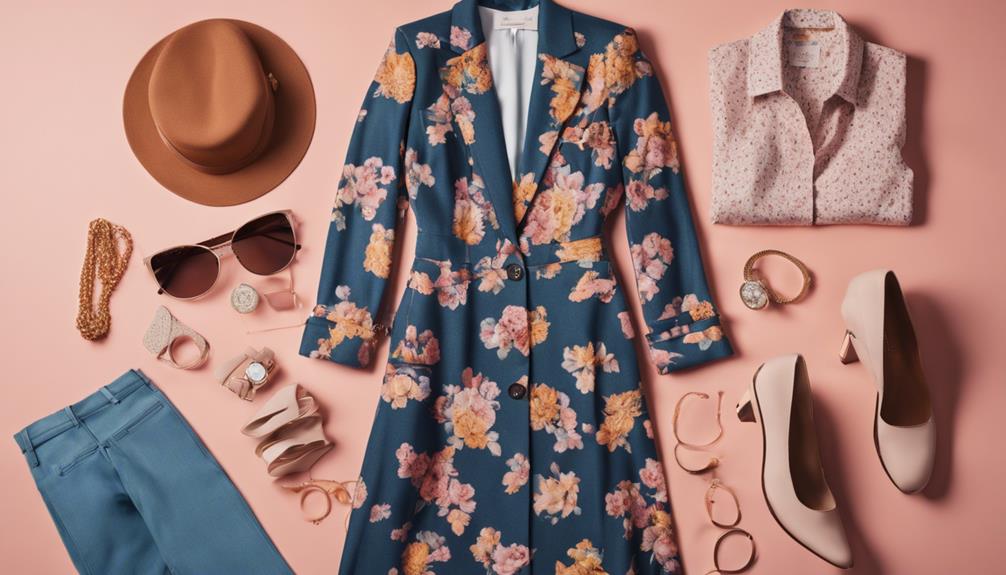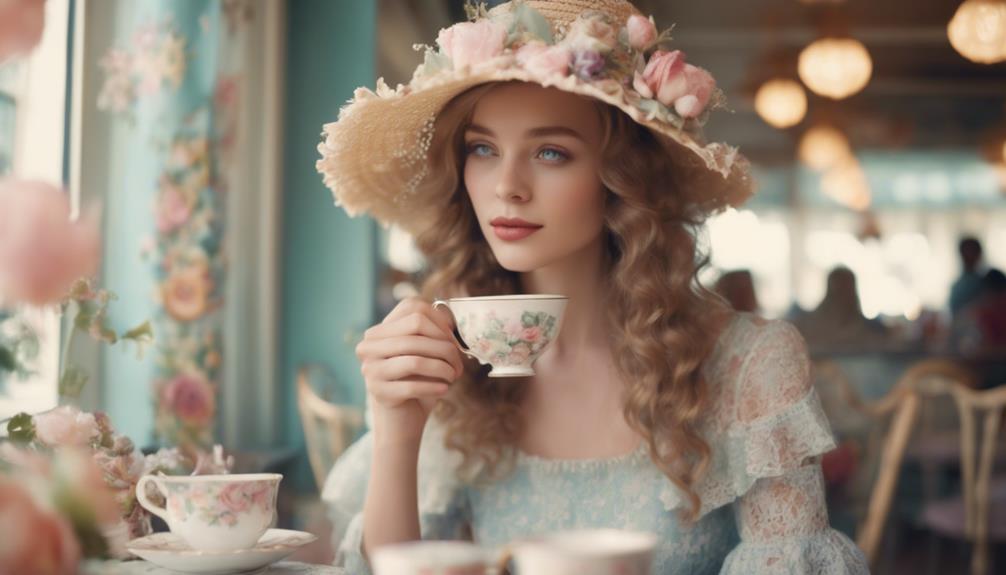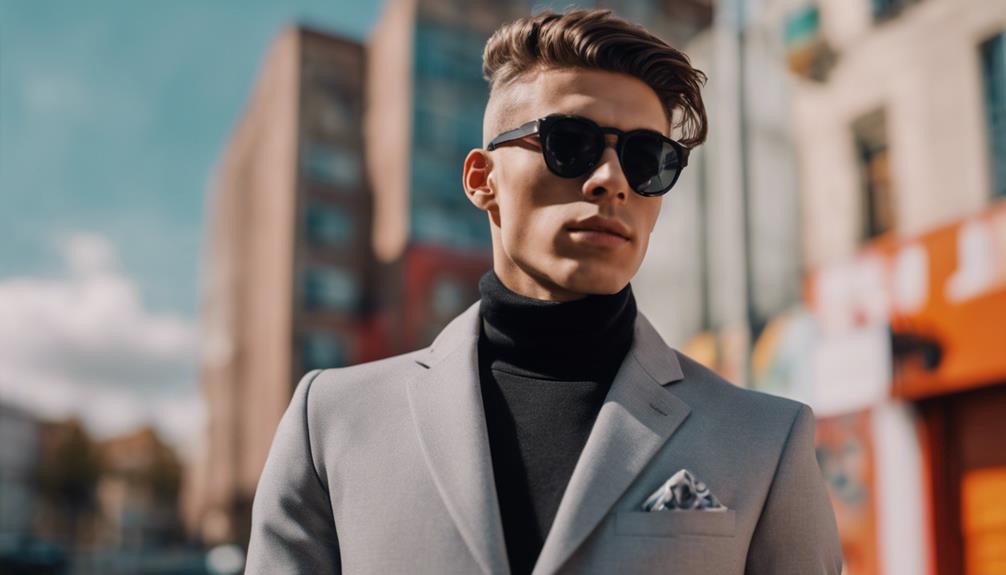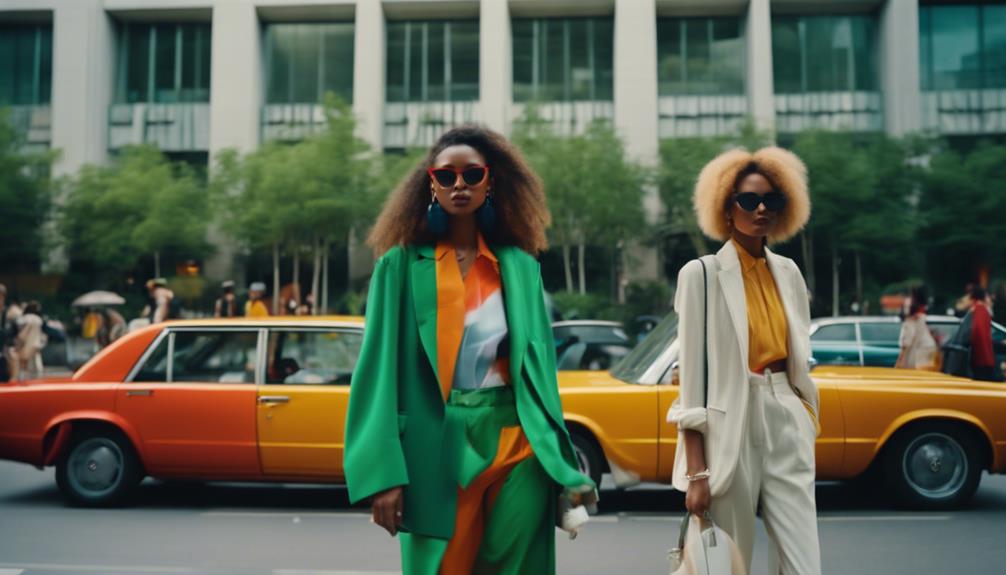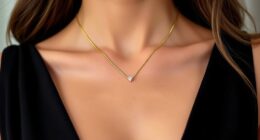Fashion icons combine classic elegance with bold innovation, inspiring your own personal style. Over the years, pioneers like Coco Chanel and Twiggy transformed the way we perceive fashion, introducing timeless pieces such as the little black dress and the miniskirt. Today, their legacy lives on, interpreted by contemporary designers who value inclusivity and sustainability. By incorporating elements from these iconic looks, you showcase your individuality while paying homage to the history of fashion. Whether you’re looking for advice on building a versatile wardrobe or interested in sustainable fashion practices, there’s a world of possibilities to explore in the realm of fashion.
Key Takeaways
- Fashion icons like Coco Chanel and Lady Gaga inspire individuality and creativity through their groundbreaking and avant-garde styles.
- Timeless wardrobe staples, such as the little black dress and wrap dress, exemplify versatility and elegance in personal style.
- Contemporary fashion movements emphasize inclusivity, gender-neutral clothing, and sustainable practices, reflecting societal changes and cultural revolutions.
- Key characteristics of fashion icons include signature silhouettes and bold patterns that challenge traditional norms and promote self-expression.
Origin and historical background of the fashion trend/style
Fashion's journey is shaped by groundbreaking designers and the eras they represent.
You'll see how figures like Coco Chanel and Twiggy not only changed clothing but also challenged societal norms.
Understanding these historical influences helps you appreciate the transformative power of style throughout the decades.
Fashion's Transformative Journey
Evolving over centuries, the world of fashion reflects societal changes and cultural revolutions, showcasing a journey from ornate 18th-century garments to today's relaxed and functional styles.
You can trace this transformation through the influence of fashion icons who redefined what it means to embody classic style.
In the mid-20th century, the introduction of ready-to-wear clothing made stylish attire accessible to many, breaking the barriers that once confined fashion to the elite. Icons like Coco Chanel and Audrey Hepburn championed comfortable yet elegant designs, steering women away from restrictive corsets and heavy fabrics.
The 1960s brought a radical shift, with figures like Twiggy leading the mod movement. This era challenged conventional beauty standards and introduced youthful, androgynous styles that resonated with a new generation.
As we moved into the 21st century, technology and social media further transformed fashion dissemination. Trends now spread rapidly, influenced by a diverse array of global styles.
This journey through time highlights how fashion continues to evolve, reflecting our changing values and desires while remaining a powerful form of self-expression.
Pioneering Designers and Innovators
Throughout history, pioneering designers and innovators have reshaped the fashion landscape, introducing styles that not only reflect their times but also challenge societal norms.
Coco Chanel revolutionized women's fashion in the 1920s by introducing the little black dress, a piece that embodies timeless style and classic elegance. With her designs, she liberated women from the constraints of corsets, promoting a new sense of comfort and sophistication.
In the 1970s, Diane von Furstenberg created the wrap dress, symbolizing empowerment and versatility. This dress allowed women to express their independence through fashion, proving that style could be both functional and chic. The 1960s saw icons like Twiggy and Grace Jones challenge traditional gender norms, paving the way for androgynous fashion that broadened the definition of beauty.
Fast forward to today, and you see the impact of Lady Gaga's avant-garde choices, pushing creative boundaries and inspiring a generation to embrace uniqueness. Meanwhile, the rise of sustainable fashion practices emphasizes recycling designer pieces, encouraging conscious consumerism.
Each of these innovators has left an indelible mark, ensuring that fashion remains a powerful means of self-expression.
Key Characteristics
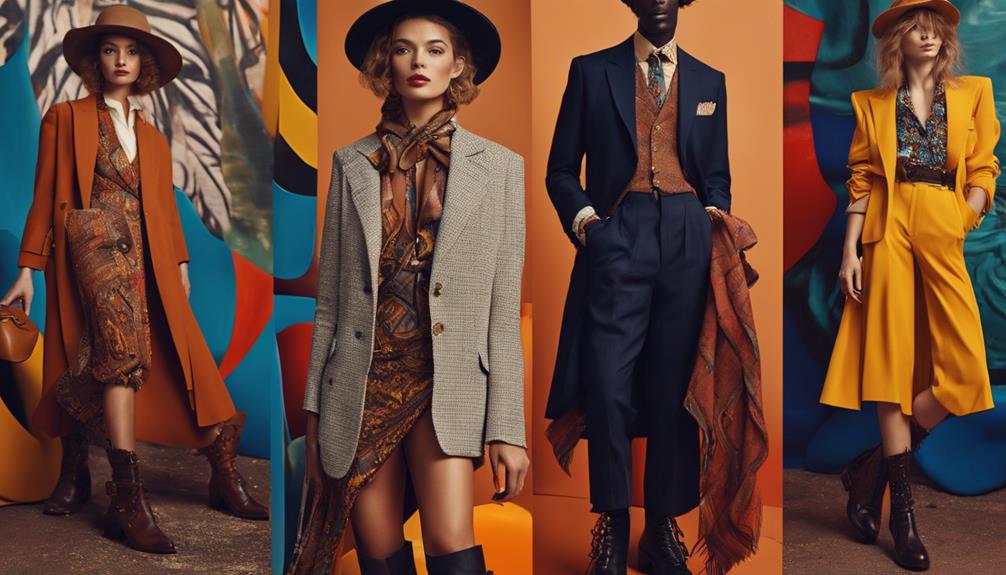
When you think about fashion icons, their key characteristics often stand out.
You'll notice signature silhouettes and bold patterns that define their unique styles, along with vibrant textiles that catch the eye.
Plus, timeless wardrobe staples play an essential role in shaping their lasting influence.
Signature Silhouettes and Patterns
Signature silhouettes and patterns play an essential role in defining the unique styles of fashion icons, showcasing their individual flair and shaping trends across generations.
For instance, Coco Chanel popularized the little black dress (LBD), a classic that embodies simplicity and elegance. Its signature silhouette has become a timeless staple in women's wardrobes.
Audrey Hepburn's style is another prime example, featuring classic tailored silhouettes like fitted dresses and capri pants. She emphasized clean lines and understated glamour, leaving a lasting influence on modern fashion.
In contrast, Twiggy introduced the miniskirt and bold patterns in the 1960s, creating androgynous silhouettes that challenged traditional femininity.
Diana Ross brought the glamorous disco aesthetic of the 1970s to life with sequined gowns and flared pants, emphasizing playful patterns and vibrant styles that still inspire today.
Finally, Lady Gaga's avant-garde choices include exaggerated silhouettes and unique patterns, pushing creative boundaries and promoting individuality.
These fashion icons illustrate how signature silhouettes and patterns can redefine norms and inspire new trends, making them pivotal in the evolution of style.
Vibrant Textiles and Hues
Vibrant textiles and hues bring energy to fashion, showcasing bold colors and intricate patterns that reflect cultural influences and artistic expression. When you explore women's fashion, you'll find that these vibrant textiles evoke emotions and convey powerful messages.
Designers like Diane von Fürstenberg have skillfully incorporated these lively prints into her iconic wrap dress, symbolizing empowerment and versatility for women everywhere.
Think back to the unforgettable styles of historical figures like Diana Ross and Grace Jones. Their performances in the 1970s and 1980s featured vibrant textiles that captivated audiences and set the stage for a bold fashion revolution.
Today, contemporary designers continue this legacy, using sustainable materials and innovative techniques to create visually striking pieces that celebrate diversity and individuality.
Incorporating vibrant textiles into your wardrobe can elevate your style and express your unique personality. Whether it's a colorful blouse, a patterned skirt, or statement accessories, don't shy away from bold hues.
Embrace the energy these vibrant textiles bring, and let your fashion choices reflect your creativity and passion. After all, fashion should be as lively and expressive as you are!
Timeless Wardrobe Staples
Timeless wardrobe staples embody versatility and elegance, allowing you to create countless outfits with just a few key pieces.
The little black dress (LBD) is a prime example, popularized by Coco Chanel, serving as the ultimate canvas for your style. You can dress it up with statement jewelry for formal affairs or keep it casual with a denim jacket for daytime outings.
Ballet flats, made iconic by Audrey Hepburn, blend comfort and sophistication, easily shifting from a brunch date to a business meeting. Another essential piece is the trench coat, also associated with Hepburn. This chic outerwear option not only provides warmth but elevates any outfit, making it a year-round staple.
Don't overlook the wrap dress, created by Diane von Fürstenberg, which flatters diverse body types while exuding femininity and empowerment. Classic denim, inspired by icons like Marilyn Monroe, remains adaptable, seamlessly fitting into both casual and elevated styles.
Incorporating these timeless staples into your wardrobe guarantees you'll always have stylish options at your fingertips, no matter the occasion. Embrace these pieces, and you'll exude effortless elegance every day.
Modern Interpretation
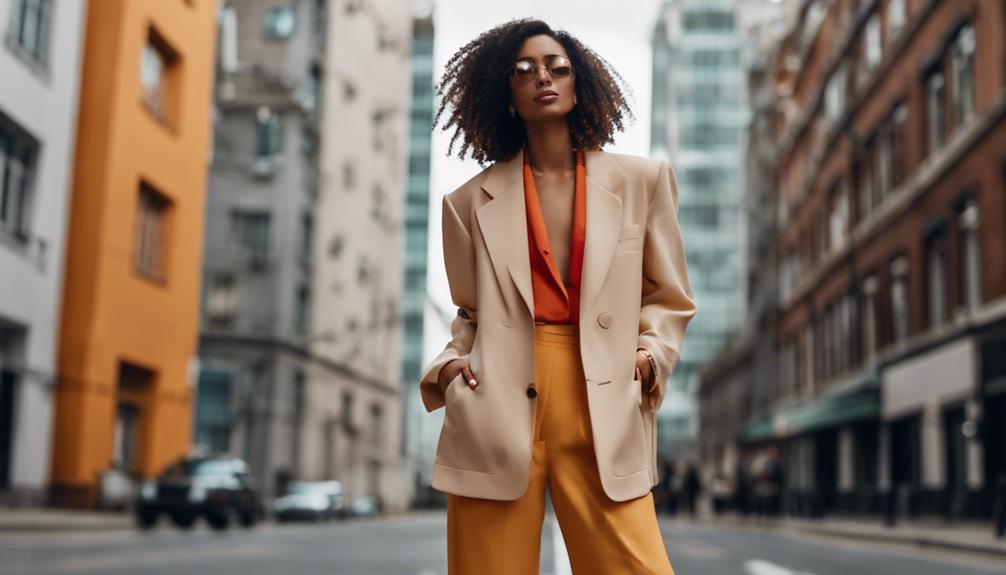
Modern interpretations of fashion icon styles are all around you, shaping contemporary fashion movements and current trends.
You'll notice trendsetting labels and A-list fashionistas reimagining classic looks, blending them with fresh elements that resonate today.
This vibrant mix not only honors the past but also pushes the boundaries of style in exciting new directions.
Contemporary Fashion Movements
Contemporary fashion movements are breaking boundaries by celebrating inclusivity and encouraging a blend of styles that reflect diverse identities and sustainable practices.
Today, designers like Billy Porter and Harry Styles are redefining fashion norms with gender-neutral clothing, making it clear that style isn't confined to traditional labels. You'll notice a shift toward sustainable fashion too, with pre-loved and vintage items gaining popularity, inviting you to embrace eco-friendly choices through second-hand shopping.
Streetwear dominates the scene, merging high fashion with casual looks, influenced by style icons like Kanye West and Virgil Abloh. Their impact showcases how fashion evolves by intersecting various cultural aesthetics.
Social media plays a pivotal role, transforming how you discover and engage with fashion. Platforms like Instagram and TikTok propel emerging designers into the spotlight, making trends more accessible than ever.
Moreover, contemporary fashion often revisits past styles, with 90s and early 2000s aesthetics resurfacing prominently. Items like baggy jeans and crop tops are making a comeback, illustrating how cyclical fashion truly is.
Embrace these movements, and let your style reflect who you're in this exciting era of fashion innovation.
Current Trendsetting Fashion Labels
In today's fashion landscape, trendsetting labels like Off-White and Balenciaga are redefining style with their bold, streetwear-inspired designs that effortlessly blend high fashion and urban aesthetics. These current trendsetting fashion labels resonate with a younger audience, pushing the boundaries of traditional fashion norms.
Gucci and Versace have embraced maximalism, showcasing vibrant colors and eclectic prints that challenge minimalist trends. Their use of oversized silhouettes encourages individual expression, allowing you to make a statement while staying comfortable.
Sustainable fashion is also on the rise, with brands like Reformation and Stella McCartney leading the charge toward eco-friendly materials and ethical production methods. This shift caters to the growing consumer demand for responsible fashion choices, proving that style and sustainability can coexist.
Emerging designers like Telfar Clemens and Christopher John Rogers are creating waves with innovative designs that promote inclusivity. Telfar's ‘Bushwick Birkin' and Rogers' colorful, structured pieces celebrate diversity and authenticity.
Additionally, Jacquemus and Simon Miller have popularized the ‘mini bag' trend, merging practicality and playfulness for must-have accessories in contemporary wardrobes.
Trendsetting A-List Fashionistas
Trendsetting A-list fashionistas are reshaping the style landscape with their daring choices and unique interpretations of fashion norms.
Take Zendaya, for instance; her chameleon-like versatility, often crafted with stylist Law Roach, showcases how personal style can push the boundaries of contemporary fashion.
Similarly, Billy Porter challenges traditional gender norms with bold red carpet looks, advocating for diverse representations within the fashion industry.
Cardi B embraces extravagance, using her over-the-top outfits to promote body positivity and self-expression, particularly evident during major events like Paris Fashion Week.
Meanwhile, Harry Styles redefines masculinity with gender-neutral clothing, flaunting dresses and ruffles that embody a modern approach to personal style and self-expression.
Don't overlook Ashley Olsen, who melds vintage aesthetics with contemporary designs in her fashion line, creating a unique, timeless appeal that resonates with many.
These trendsetting A-list fashionistas exemplify how today's icons aren't just following trends; they're creating them, celebrating individuality and encouraging everyone to express their personal style boldly.
As a result, the fashion industry is evolving, and you can be inspired to embrace your unique flair too.
Styling Tips
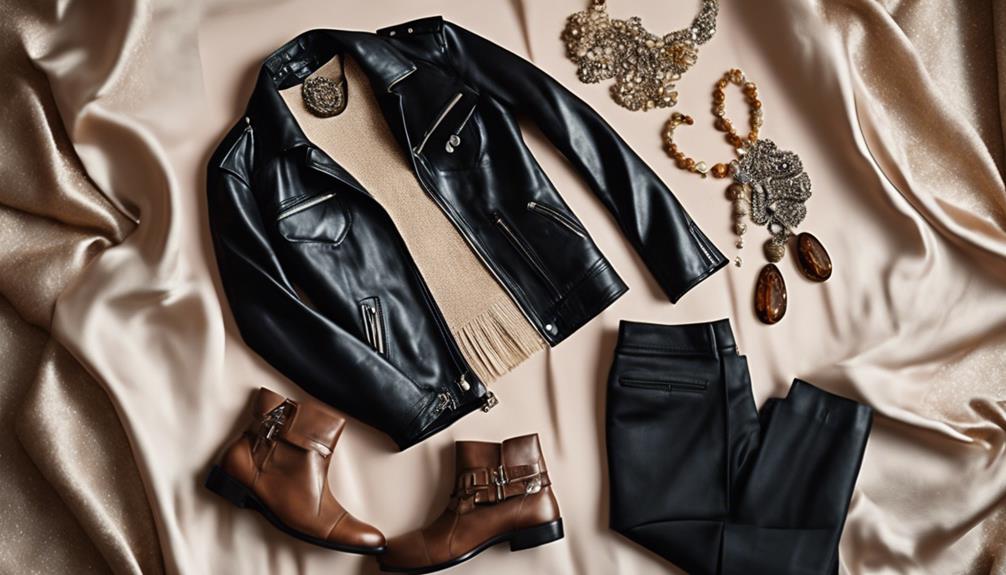
When it comes to styling, a classic white button-up shirt is your best friend for versatility.
You can easily layer it with different textures and patterns to create a fresh look every time.
Don't shy away from mixing and matching; it's all about expressing your unique style!
Classic White Button-Up Shirt
The classic white button-up shirt is your go-to piece for effortlessly shifting between casual and formal styles. This versatile wardrobe staple is essential in the fashion world, allowing you to navigate various occasions with ease.
For a polished look, pair your shirt with tailored trousers and heels, creating an outfit that's perfect for the office or important meetings. It's all about balance and sophistication.
If you're aiming for a more relaxed vibe, roll up the sleeves and tuck the shirt into high-waisted jeans or shorts. Adding sneakers will give you a chic weekend outfit that embodies effortless street style.
Don't forget about accessories! Elevate the simplicity of your white shirt by adding statement jewelry, like bold earrings or a chunky necklace. These pieces can transform your outfit, making the shirt stand out without losing its classic appeal.
Layering Techniques for Versatility
Layering techniques can elevate your wardrobe, enhancing the versatility of pieces like the classic white button-up shirt for any occasion.
Start with a well-structured base layer, such as a fitted turtleneck or a classic white tee. This foundation allows you to build your outfit without sacrificing a polished look. Choose lightweight fabrics like cotton or silk to avoid bulkiness while ensuring breathability.
Accessorizing is key in layering. Incorporate scarves or statement necklaces to add visual interest and personal flair without overwhelming your outfit. Don't forget the finishing touches—oversized sunglasses can elevate your overall vibe, bringing a chic edge to your layered look.
Mastering color coordination is essential. Stick to a harmonious palette to maintain cohesion in your ensemble, while mixing textures can add depth and personality. For instance, pairing a soft knit with a structured blazer creates an engaging visual contrast.
Combining Textures and Patterns
Mixing textures and patterns can transform a simple outfit into a stunning statement, showcasing your unique style and creativity. Start by pairing contrasting textures, like a chunky knit sweater with a sleek leather skirt, to add depth and visual interest. This combination enhances the overall appeal of your look, making it more dynamic.
For patterns, don't shy away from bold combinations. Stripes with florals or polka dots with plaid can create a playful yet sophisticated vibe. Just make sure the colors complement each other; this harmony guarantees your outfit feels cohesive.
Layering different fabrics, such as denim with silk, introduces balance and versatility, allowing you to shift from day to night effortlessly. Accessories also play an important role; a textured scarf or a statement jacket can elevate your outfit, adding an unexpected twist that draws attention.
To keep your ensemble from feeling overwhelming, start with a neutral base. This strategy lets the mixed textures and patterns shine, enabling your unique style to stand out.
Embrace these tips, and you'll create outfits that not only express your fashion sense but also leave a lasting impression.
Shopping Guide
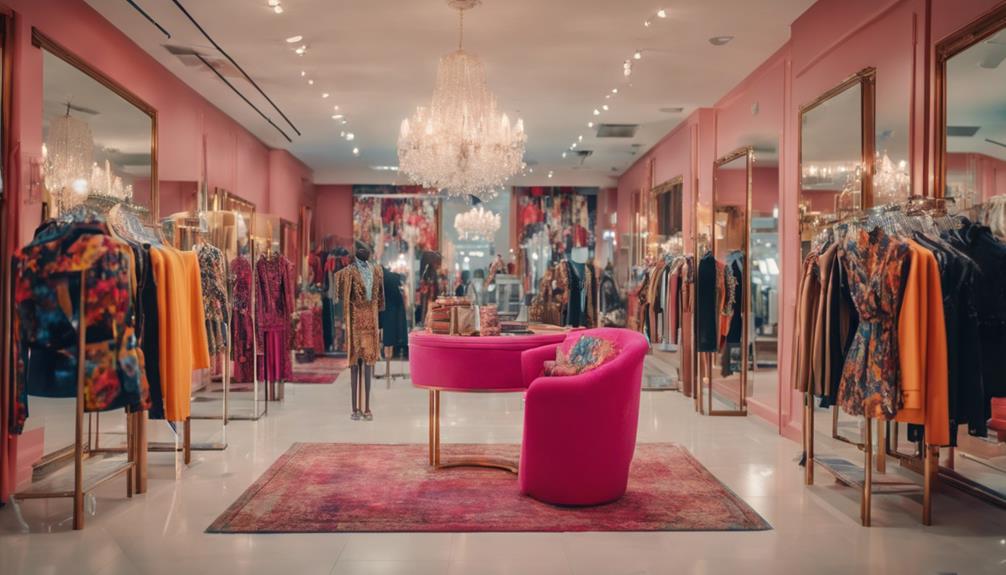
Explore consignment shops to uncover timeless fashion pieces that channel the essence of legendary icons. You'll find vintage items that reflect the elegance of fashion greats like Audrey Hepburn and Coco Chanel. These stores are treasure troves where you can discover unique, pre-loved pieces that fit your personal style while keeping your budget in check.
Understanding your personal style is key when shopping for women's fashion. This knowledge lets you curate a wardrobe that resonates with your favorite icons, allowing you to express yourself while drawing inspiration from historical trends. Look for iconic pieces like the little black dress or vintage denim—these staples often come at a fraction of their original price without sacrificing quality.
Social media also plays a significant role in your shopping journey. Follow fashion enthusiasts who share their unique finds and connect with communities dedicated to celebrating iconic styles.
By building a versatile wardrobe through curated selections from consignment stores, you not only enhance your style but also embrace sustainable fashion practices. This approach promotes eco-friendly shopping while honoring the legacy of fashion icons.
Upcycling Vintage Fashion Finds
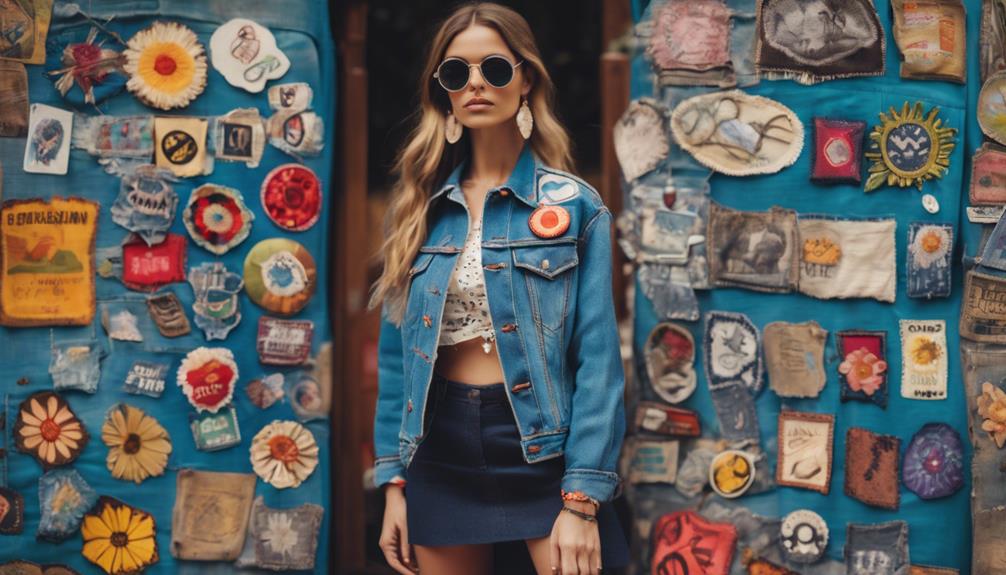
Upcycling vintage fashion finds lets you repurpose old accessories into eye-catching statement pieces.
You can personalize garments with unique embellishments and patches that reflect your style.
This creative approach not only makes your wardrobe stand out but also contributes to sustainable fashion.
Repurposing Old Accessories
Transform old accessories into stylish, one-of-a-kind pieces that showcase your personal flair while promoting sustainability. Upcycling vintage fashion finds lets you breathe new life into items that might otherwise gather dust. Think creatively about how you can repurpose old accessories to make them truly yours.
For instance, consider taking a colorful scarf and turning it into a trendy headband or a chic bag embellishment. You could also transform a vintage brooch into a statement necklace, adding a unique touch to your modern outfits. By combining multiple vintage items, you can create accessories that stand out and reflect your individual style.
The growing global market for upcycled and repurposed fashion means you're joining a movement that values sustainability and creativity. As consumers increasingly seek eco-friendly options, your efforts in repurposing old accessories contribute to this positive change. Plus, engaging in upcycling supports local artisans and small businesses, fostering a community that thrives on creativity and innovation.
Personalized Embellishments and Patches
Personalized embellishments and patches breathe new life into vintage fashion finds, allowing you to showcase your unique style while championing sustainability. By transforming ordinary pieces into extraordinary garments, you embrace the art form of upcycling, turning your wardrobe into a canvas for self-expression. This practice not only reduces textile waste but also aligns with the growing trend of conscious consumerism.
The roots of adding patches can be traced back to the punk movement of the 1970s, where DIY aesthetics became a powerful rebellion against mainstream fashion norms. Today, you can take inspiration from this legacy to create one-of-a-kind pieces that stand out in a world of mass production.
As you explore personalized embellishments—whether it's custom embroidery, unique patches, or creative fabric alterations—you contribute to a significant shift in the fashion industry. Reports indicate that the global market for upcycled fashion is on the rise, reflecting your desire for sustainable and individualized clothing options. By incorporating these elements into vintage finds, you not only diversify your wardrobe but also celebrate your individuality in style.
Cultural Impact

When you think of fashion icons, iconic film moments often come to mind, showcasing styles that shape cultural trends.
The feminist fashion revolution has also transformed how you view clothing, encouraging you to embrace empowerment and individuality through your wardrobe choices.
Together, these influences illustrate how deeply interconnected fashion and culture really are.
Iconic Film Fashion Moments
Iconic film fashion moments haven't only defined characters but also reshaped cultural perceptions of style, influencing generations of designers and fashion enthusiasts alike.
Take Audrey Hepburn's stunning black Givenchy gown in 'Breakfast at Tiffany's'; it's a symbol of timeless elegance that continues to inspire contemporary fashion trends. Similarly, Marilyn Monroe's iconic white halter dress from 'The Seven Year Itch' set the standard for sensuality in fashion, echoing in today's designs.
Think about the 1960s, when Twiggy's mod styles challenged beauty norms with her short shift dresses and bold patterns. These moments pushed boundaries and inspired a wave of fashion-forward individuals.
Then there's Diana Ross, whose extravagant sequined gowns and flared pantsuits during the disco era of the 1970s captured the playful spirit of fashion, leaving an indelible mark on the decade's style.
Films like 'The Great Gatsby' revive interest in vintage fashion, proving that cinematic wardrobe choices have a profound impact on public perception and contemporary trends.
These iconic moments bridge the past and present, continuously shaping how we view and express style.
Feminist Fashion Revolution
The evolution of fashion in film laid the groundwork for the feminist fashion revolution, where women began to redefine their style as a powerful expression of independence and empowerment.
In the 1960s and 1970s, women rejected traditional gender norms, embracing styles like the pantsuit and the wrap dress. Designers such as Diane von Fürstenberg popularized the wrap dress, symbolizing women's liberation and self-expression in the workplace.
Coco Chanel played a pivotal role by introducing comfort and practicality, liberating women from restrictive clothing like corsets. Her influence paved the way for the androgynous look, a style that challenges conventional gender boundaries.
Today, figures like Billy Porter and Harry Styles embody this evolution, showcasing how fashion can be a fluid form of self-expression.
Moreover, the feminist fashion revolution emphasizes body positivity and inclusivity, driven by voices like Lizzo and Cardi B. They challenge outdated beauty standards, encouraging everyone to embrace their unique style.
This movement not only empowers individuals but also fosters a culture of diversity and acceptance, proving that fashion is a potent tool for social change.
Frequently Asked Questions
Who Is the Most Iconic Fashion Icon?
When you think about the most iconic fashion icon, Coco Chanel often comes to mind. Her revolutionary designs, like the little black dress, transformed women's fashion, emphasizing comfort and elegance that continues to inspire you today.
Who Has the Most Influence on Fashion?
When you consider who influences fashion the most, it's clear that figures like Coco Chanel, Audrey Hepburn, and Lady Gaga have shaped styles greatly. Their unique approaches encourage you to express your individuality in vibrant ways.
What Are the Influence of Fashion Icons?
Fashion icons influence your style choices by introducing trends, challenging norms, and promoting self-expression. They shape cultural movements and inspire designers, encouraging you to explore diverse aesthetics while embracing sustainability and individuality in your wardrobe.
Who Is Known as the Fashion Icon?
When you think of fashion icons, names like Coco Chanel, Audrey Hepburn, and Lady Gaga come to mind. Each one redefined style, leaving lasting impacts on trends and inspiring countless individuals to express themselves through fashion.
How Can Legendary Fashion Styles Inspire the Creation of a Stylish Brand Identity?
Legendary fashion styles have the power to inspire the creation of a unique and iconic brand identity. By drawing inspiration from timeless fashion icons and trends, a brand can incorporate elements of sophistication and elegance into its creating stylish fashion logo, setting itself apart as a leader in the industry.
Conclusion
In embracing these legendary styles, you not only honor fashion's rich history but also express your unique identity.
By mixing classic elements with modern flair, you can create outfits that inspire and captivate.
Remember, it's all about how you wear it—confidence is your best accessory!
So, immerse yourself in vintage finds, explore current trends, and don't hesitate to put your spin on iconic looks.
Fashion is a creative journey, and you're the star of your own show!

